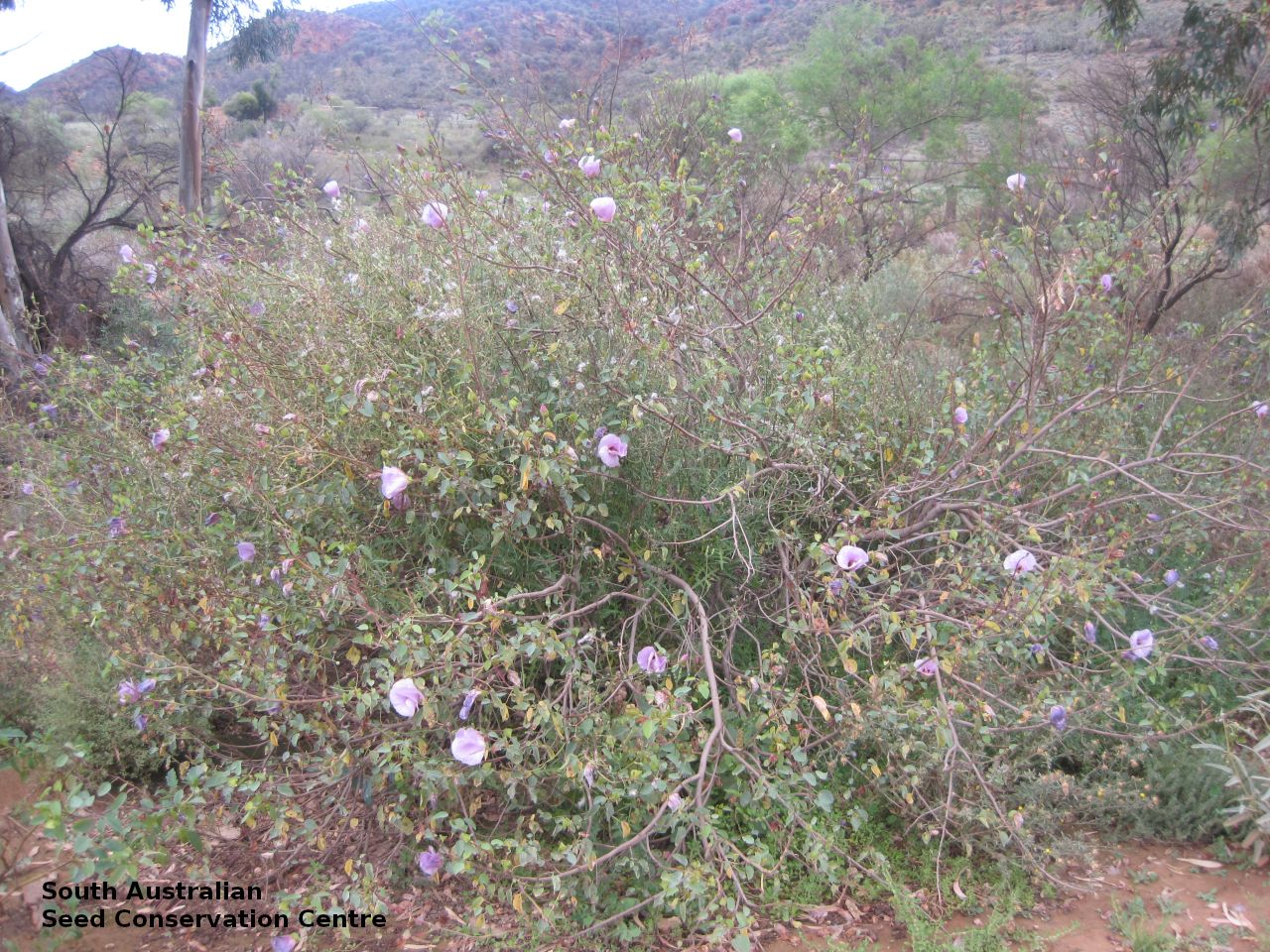
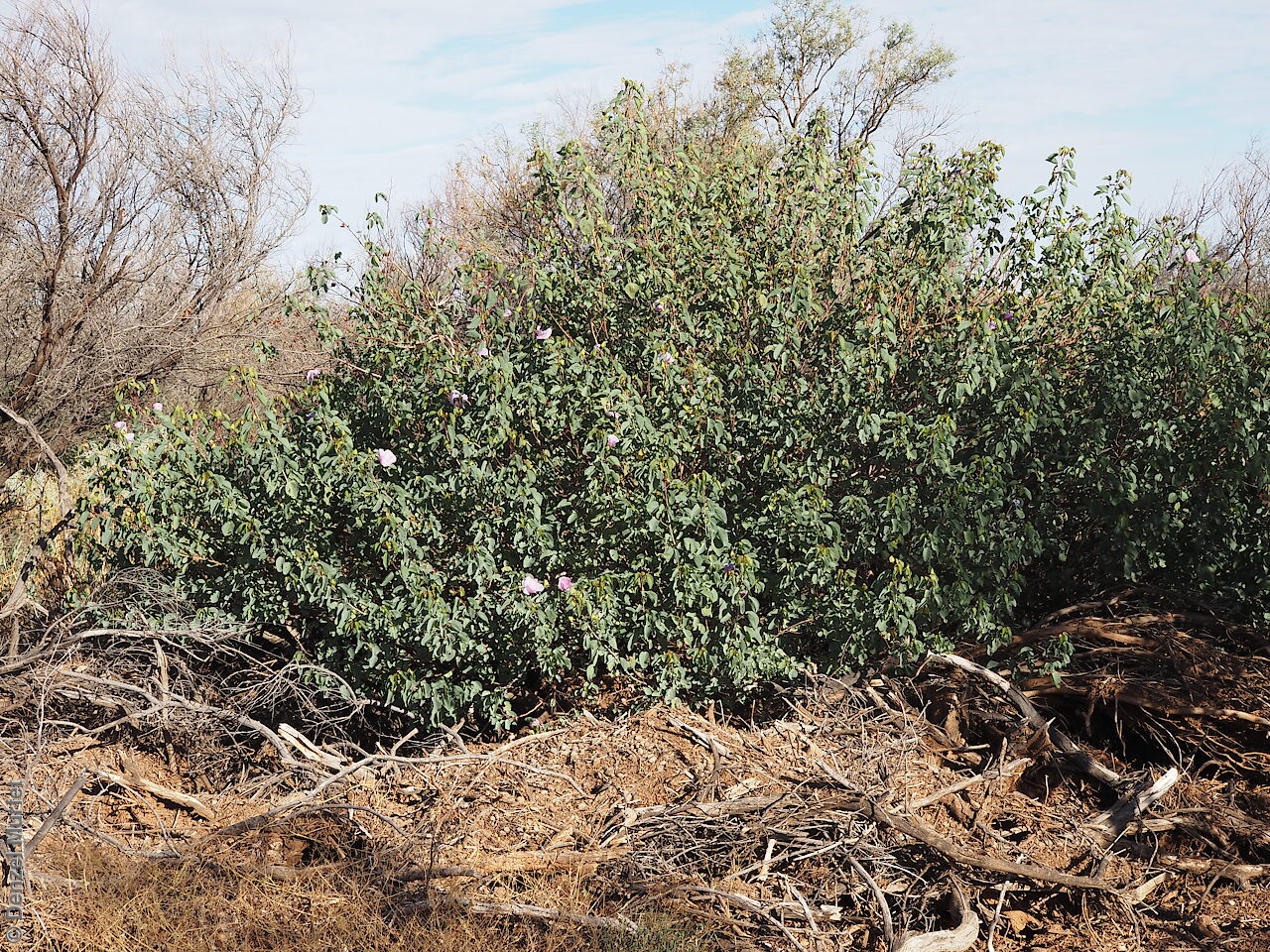
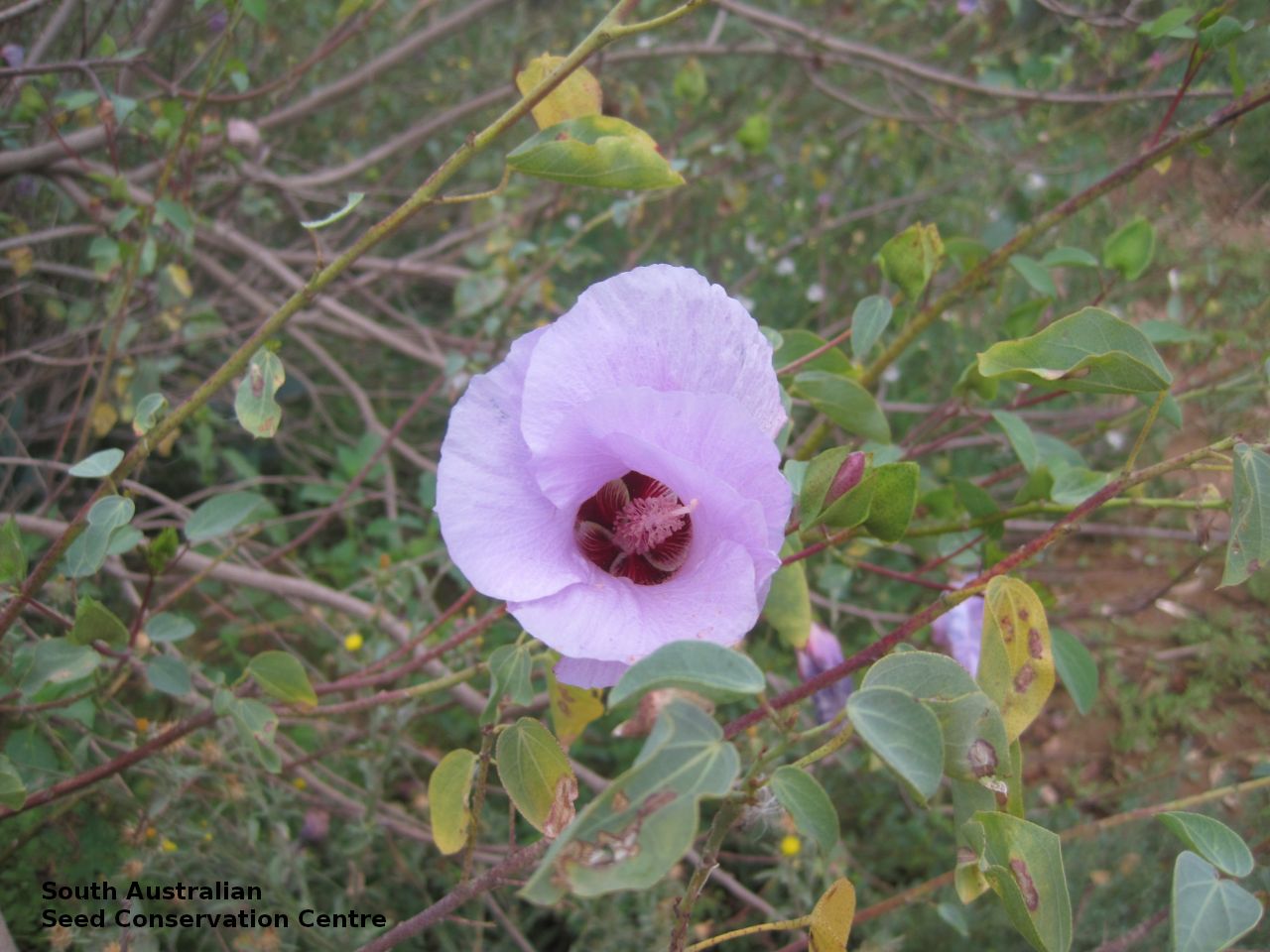
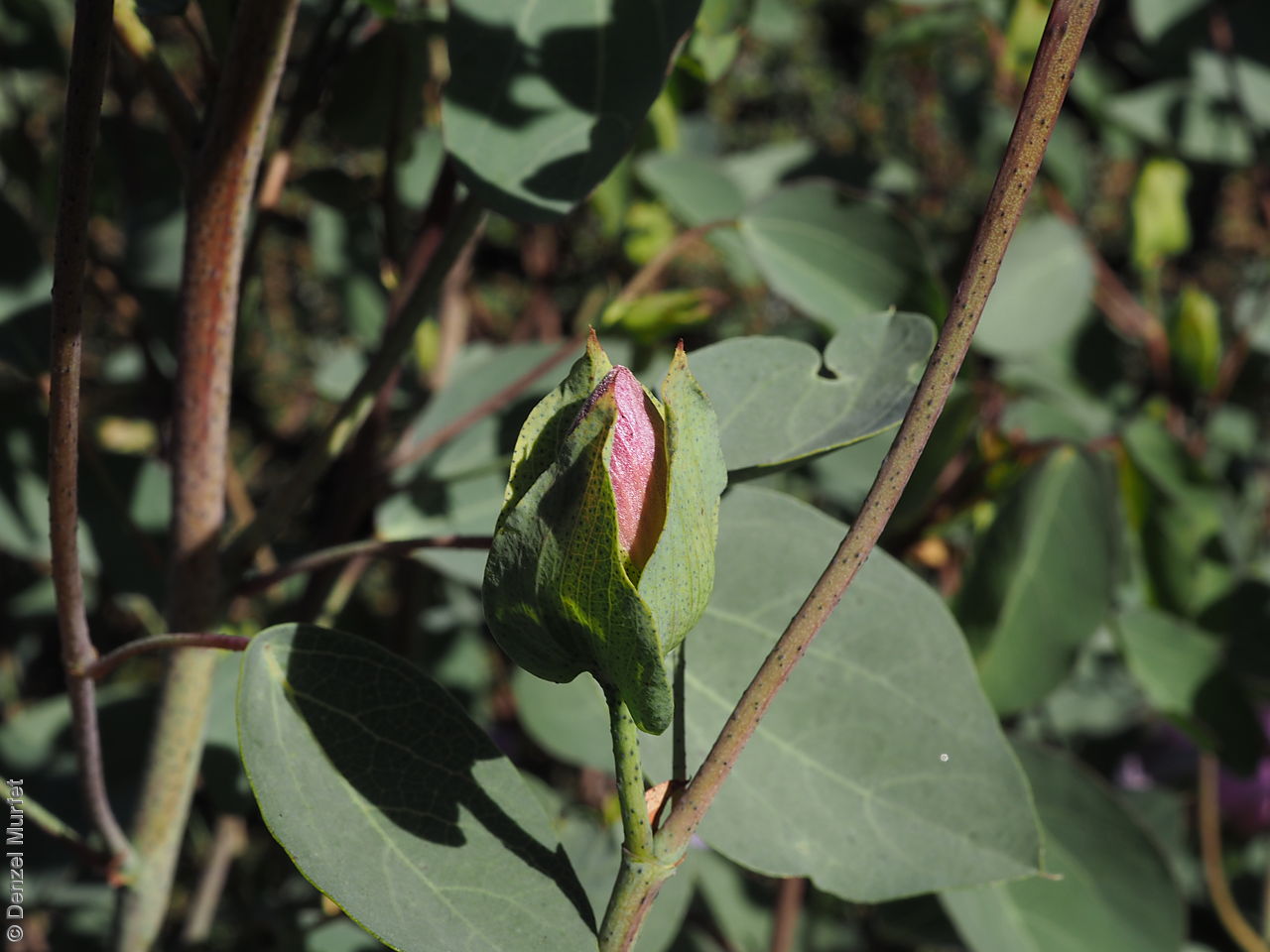
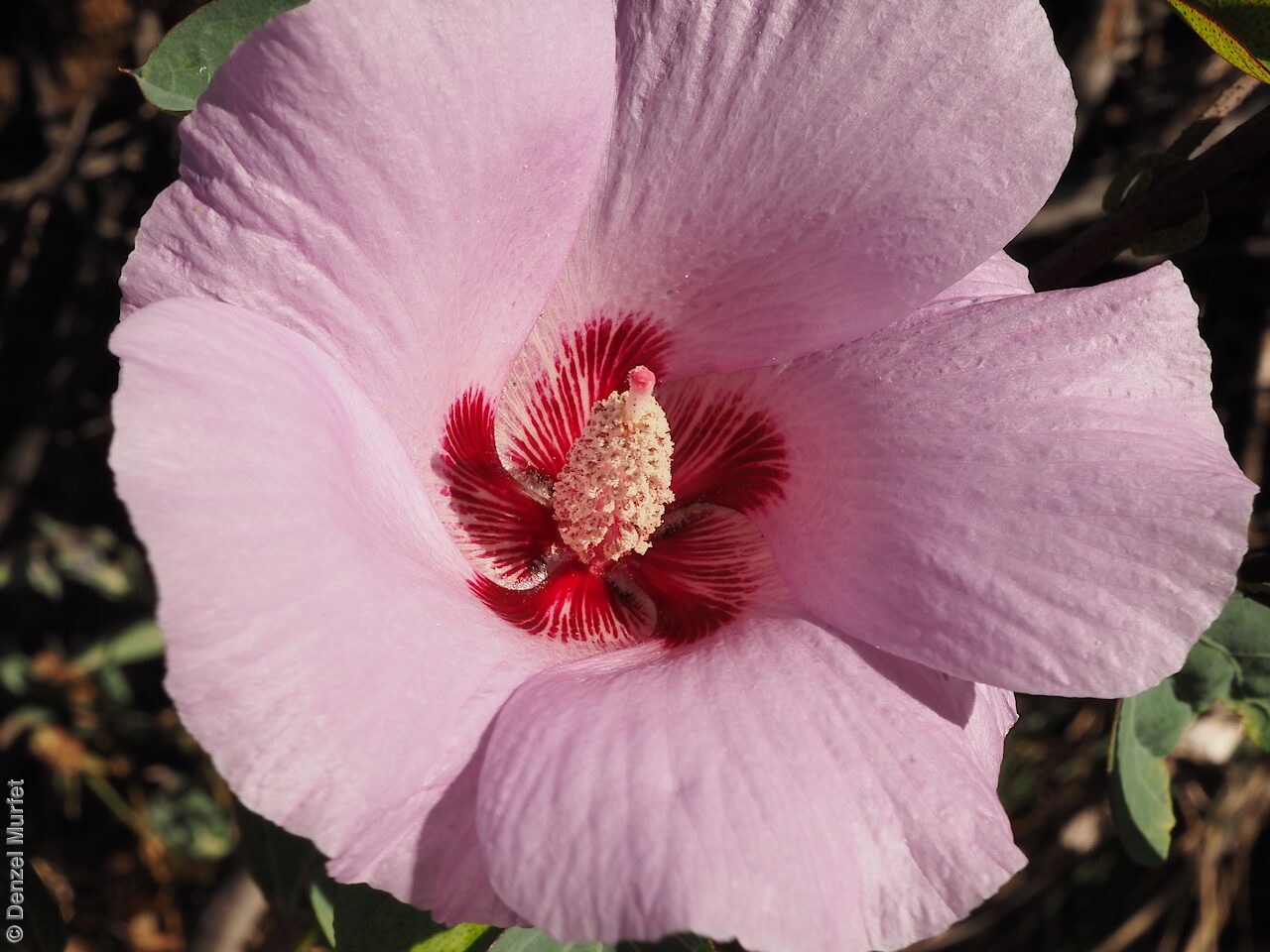
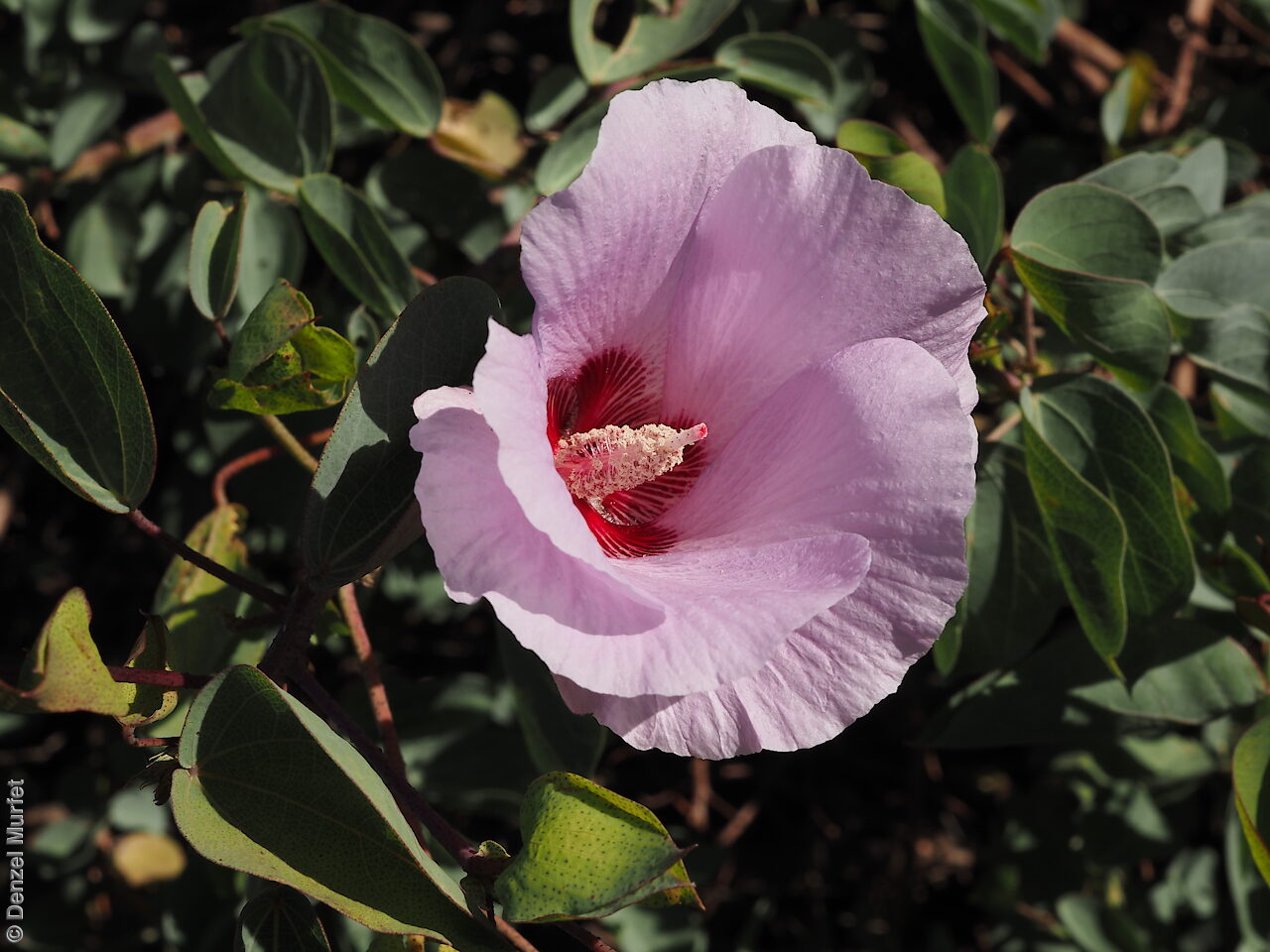
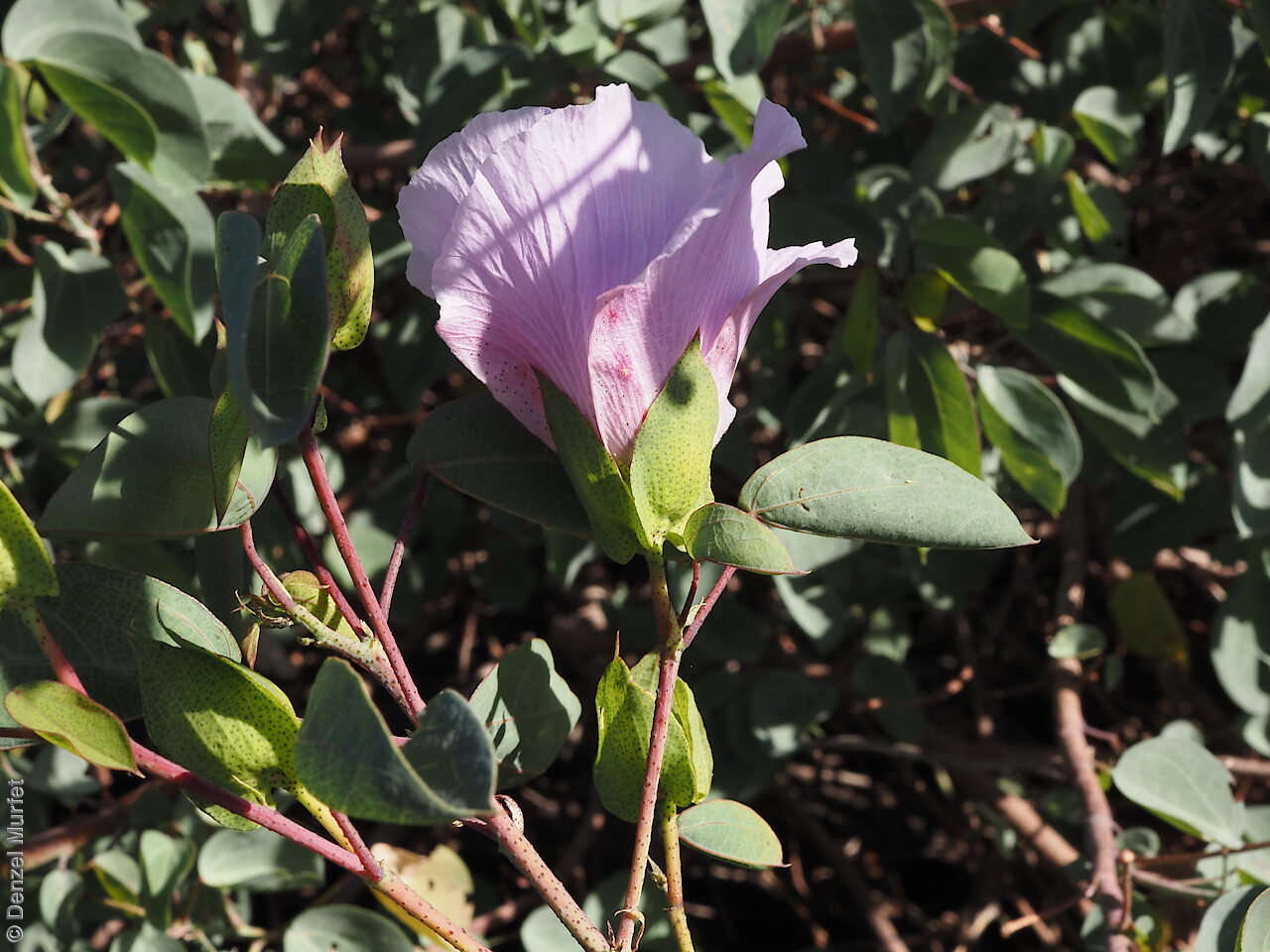
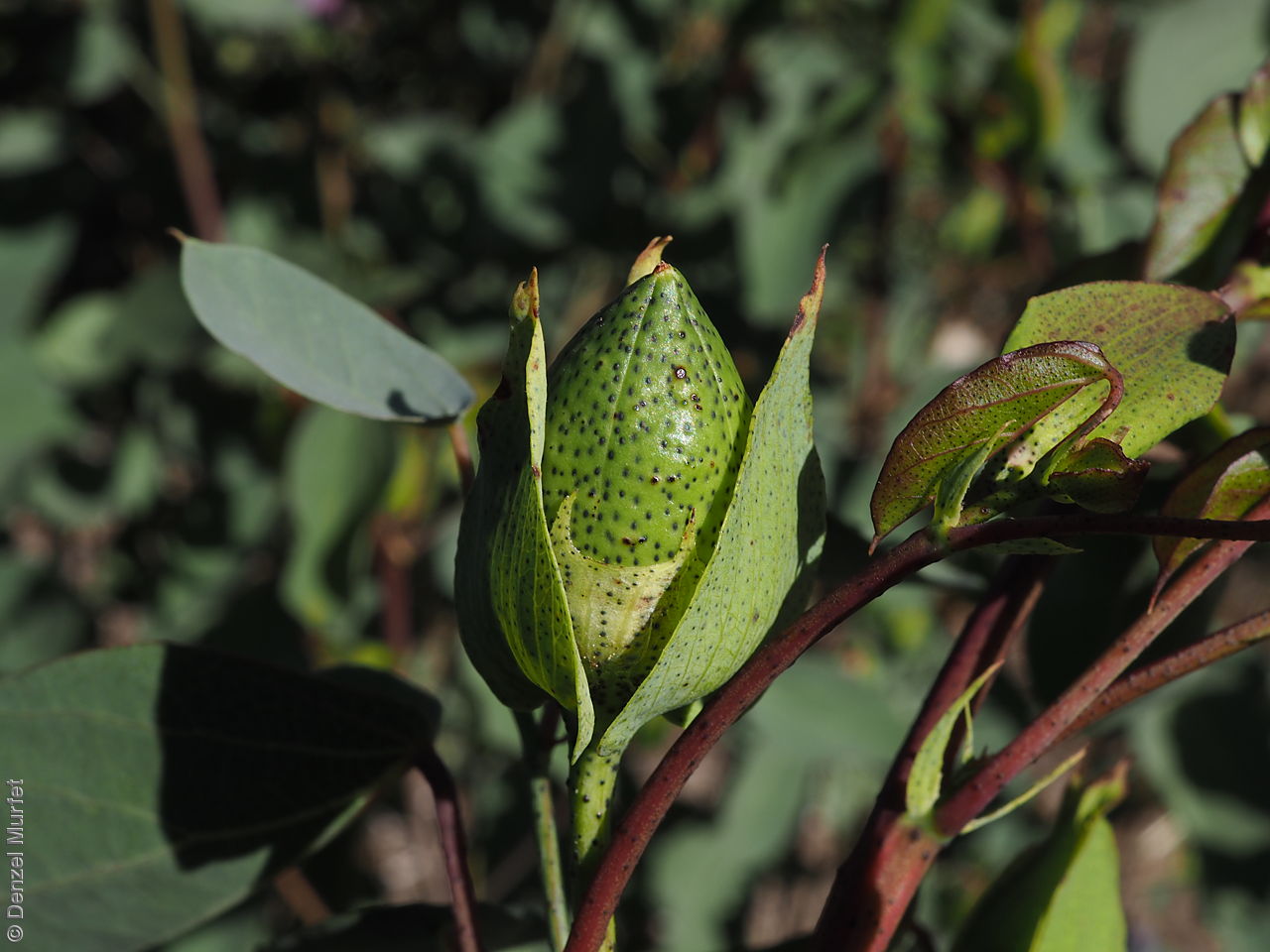
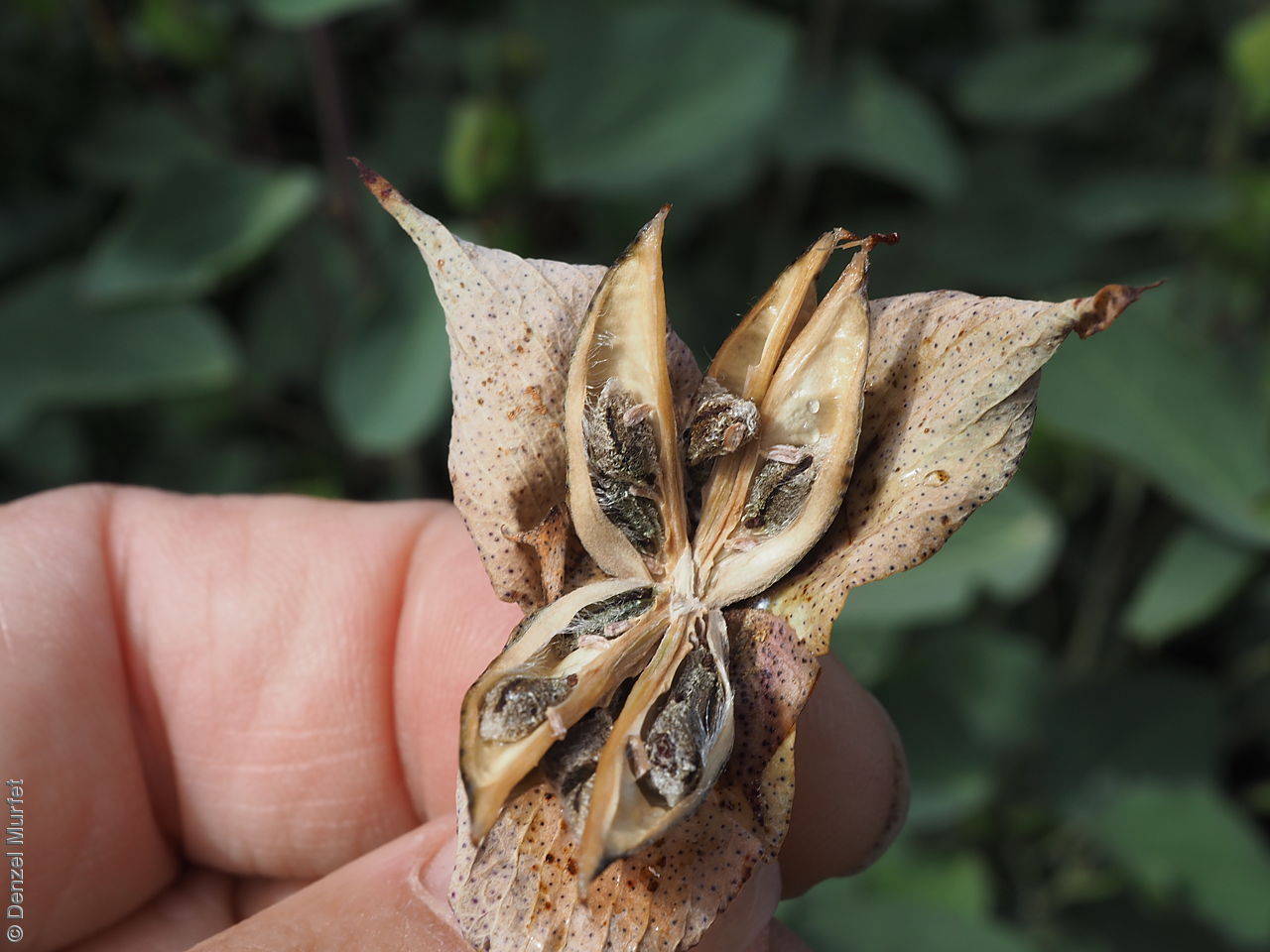
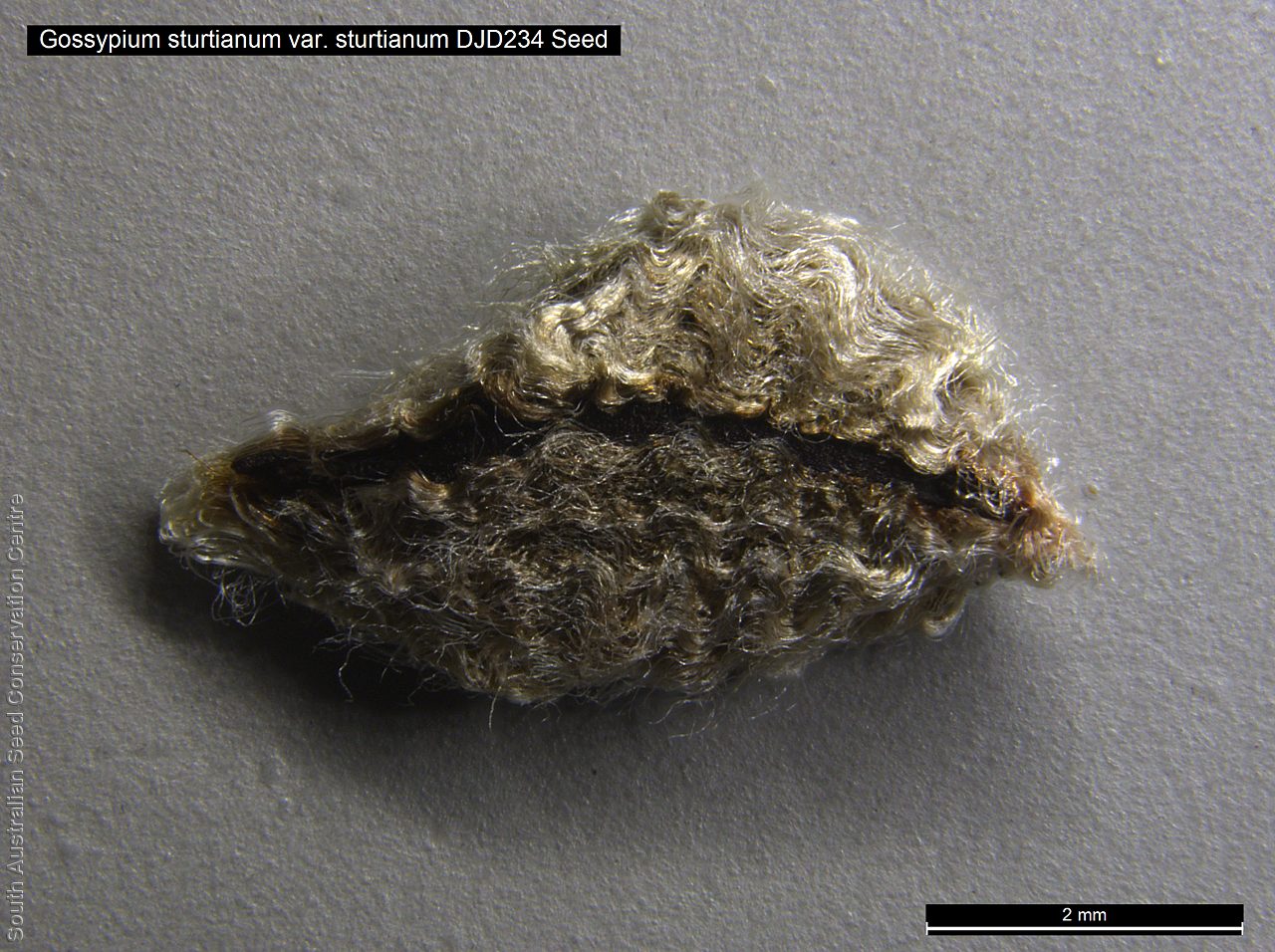
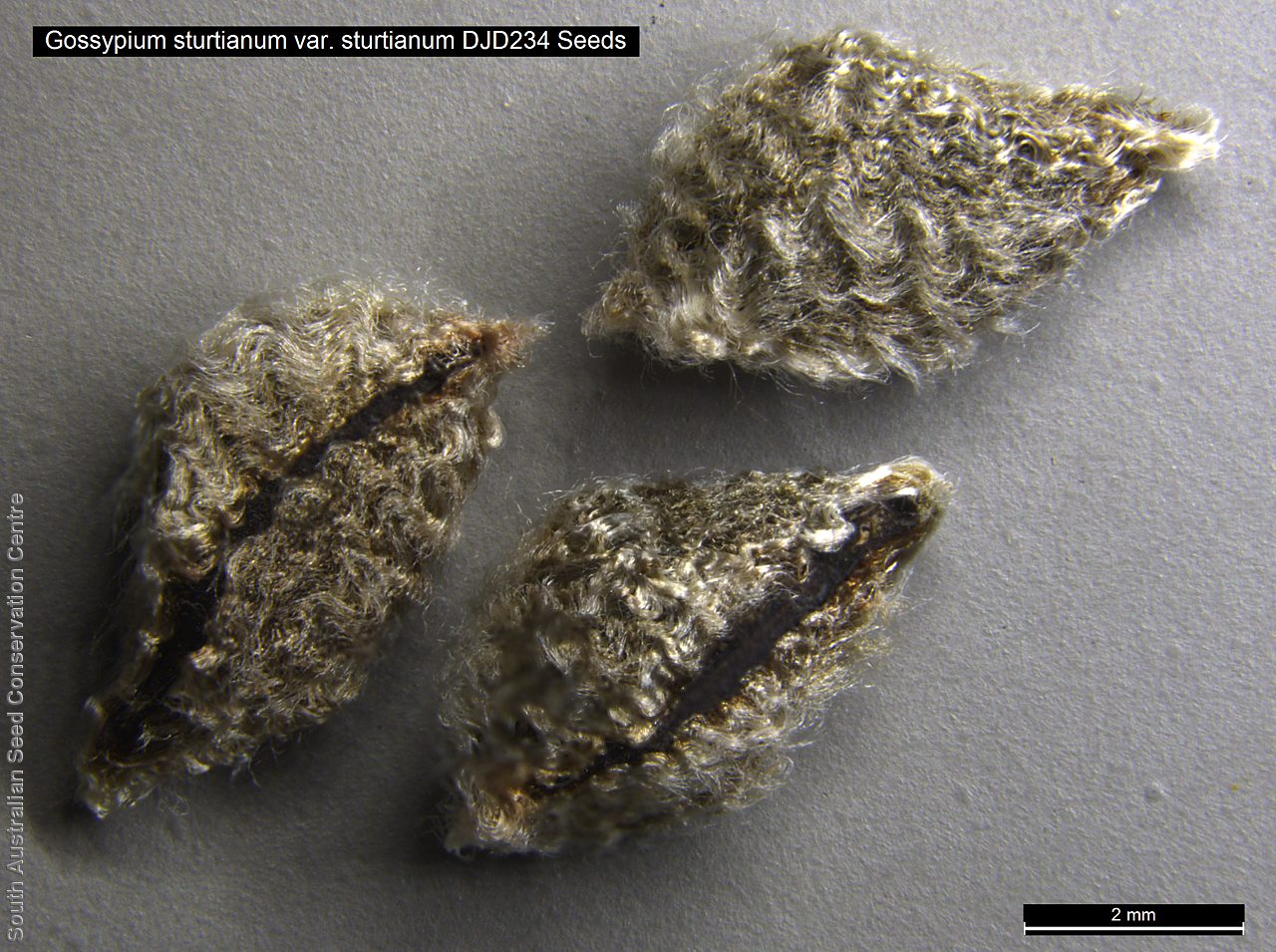
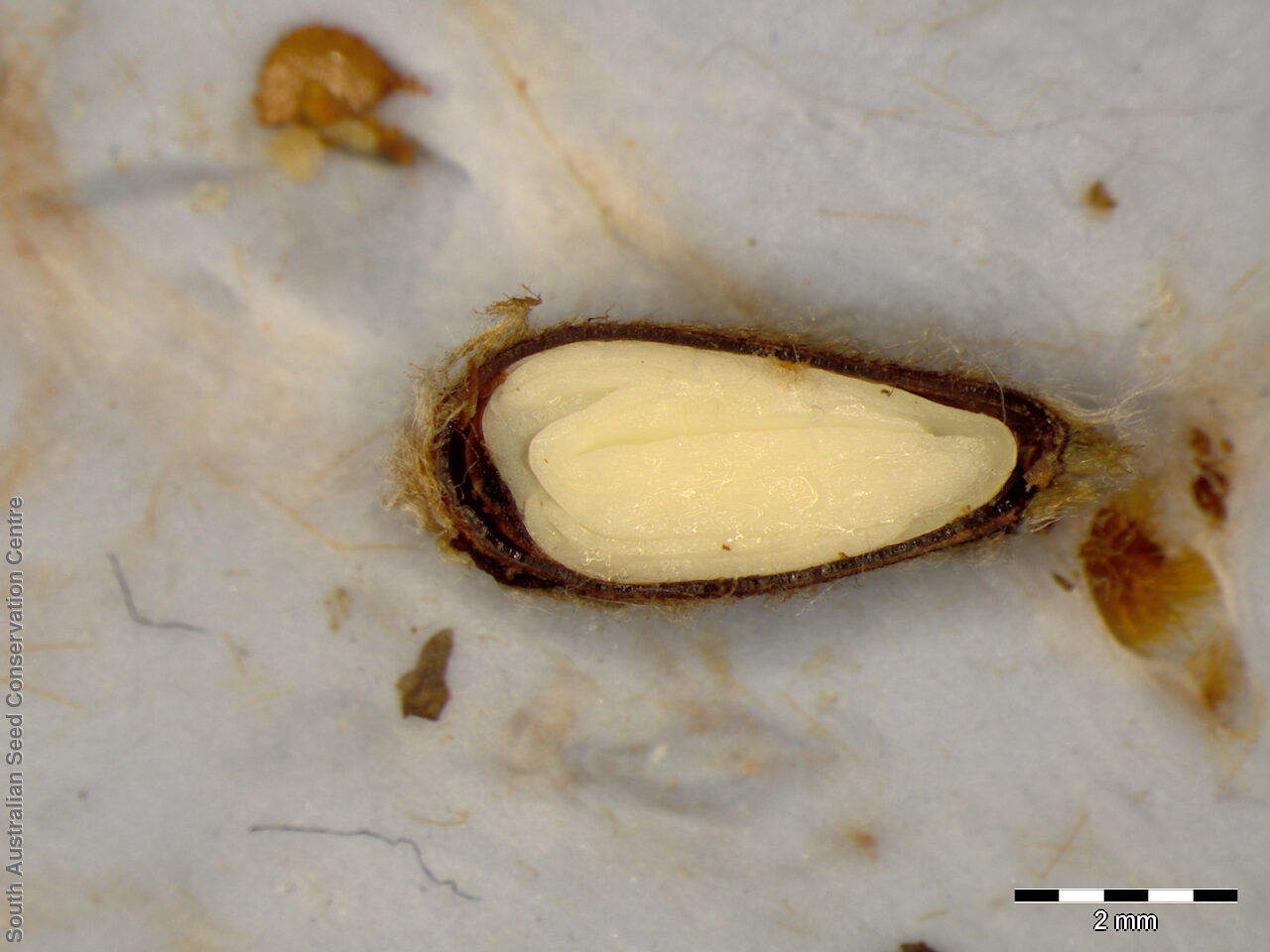
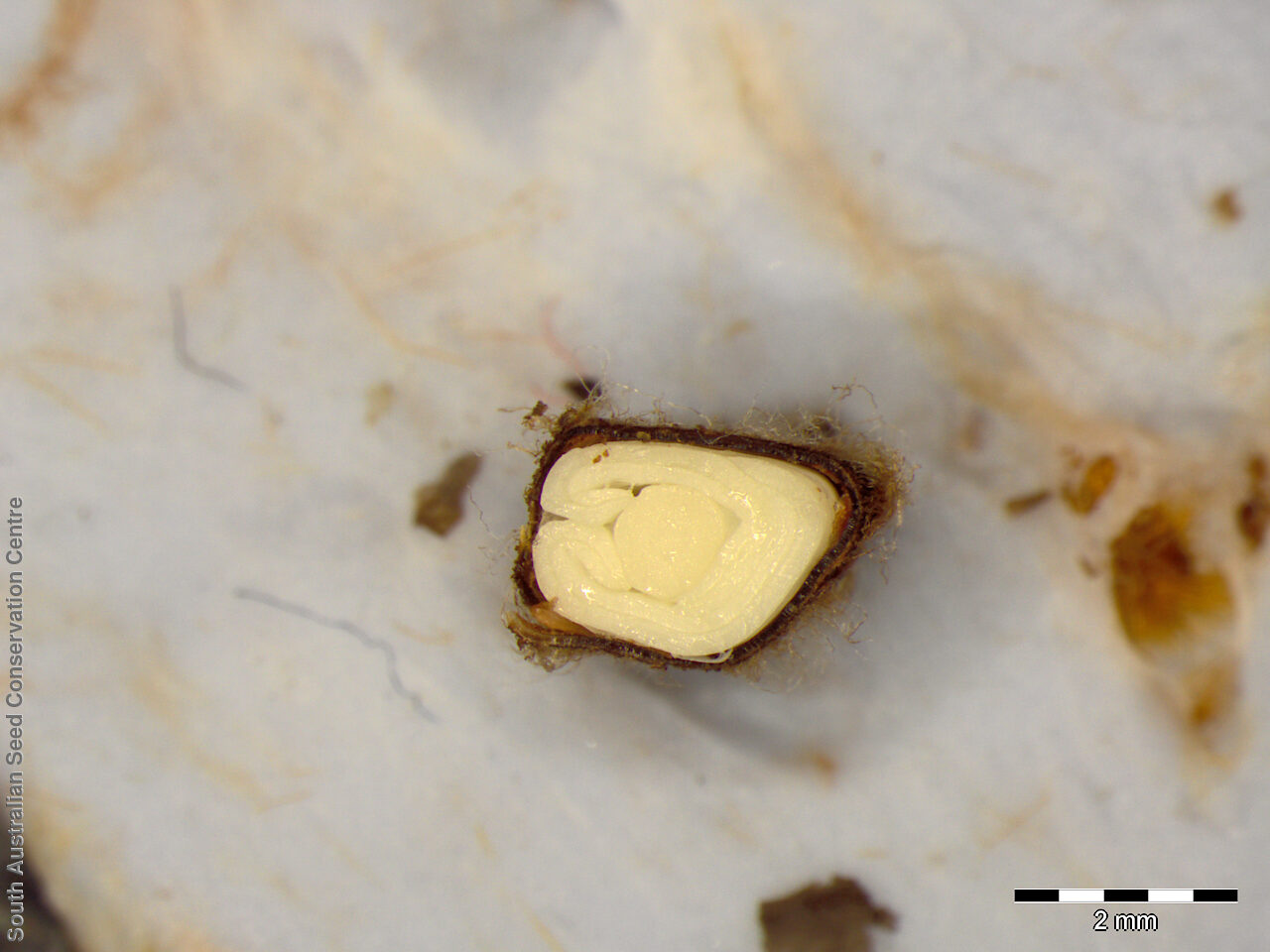
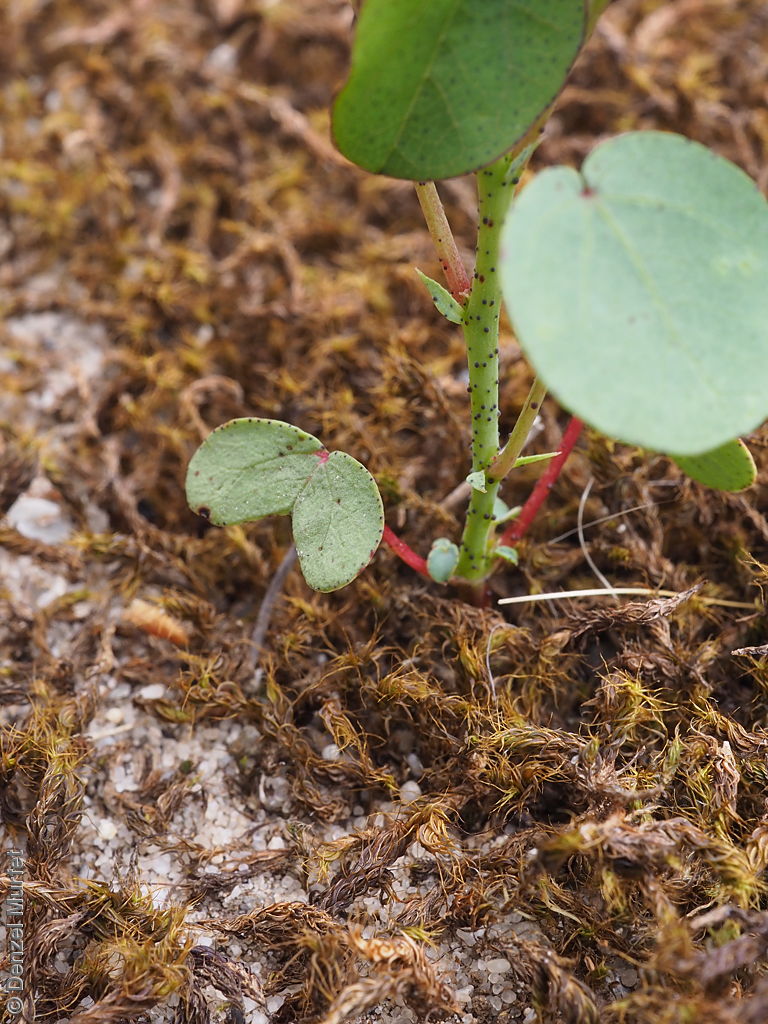

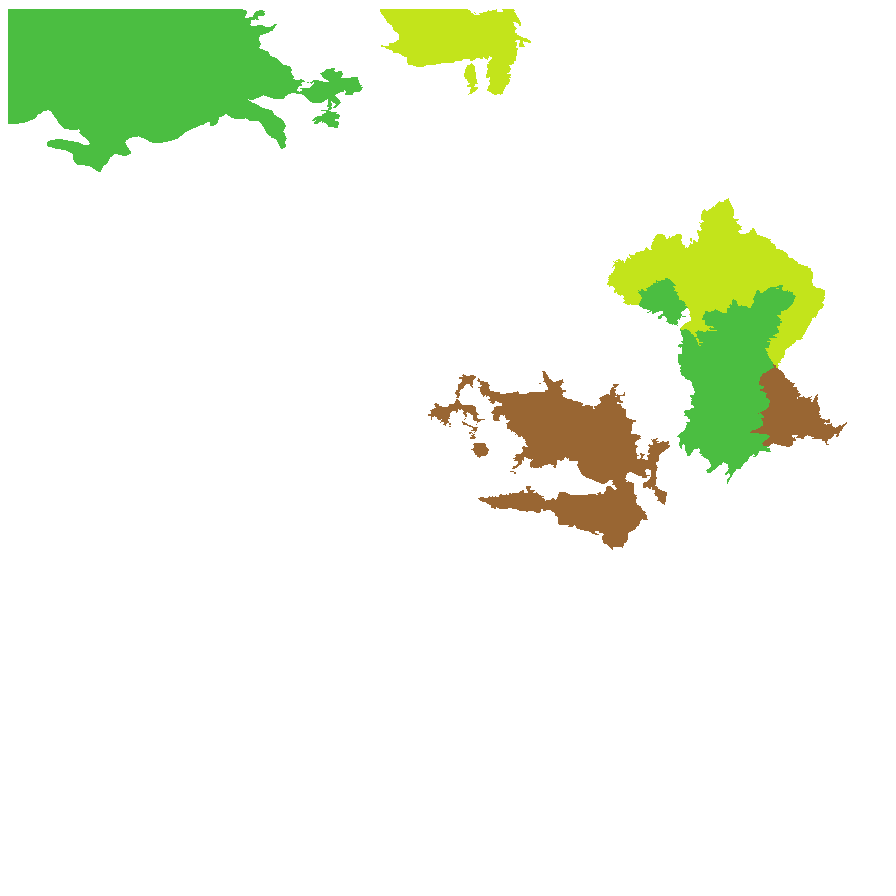
Botanical art
Prior names
Gossypium gossypioides
Gossypium australiense
Sturtia gossypioides
Gossypium sturtii
Cienfuegosia gossypioides
Common names
Sturts Desert-rose
Sturt's Desert Rose
Kal#pir-kal#pirpa
Etymology
Gossypium from the Latin 'gossypion', named used by Pliny the Elder to describe the cotton tree, which is derived from the Arabic 'goz' meaning soft such as cotton, referring to the fluffy white seed covering, common to the genus. Sturtianum named after Captain Charles Napier Sturt (1795-1869), a British explorer of Australia, and collector of the type specimen.
Distribution and status
Found in two disjunct areas in South Australia, in the far north-western corner and around the Flinders Ranges, growing on rocky or gravelly ranges, hills or rises and along watercourses and run-on areas. Also found in Western Australia, Northern Territory, Queensland and New South Wales. Native. Common in South Australia. Uncommon in Western Australia. Common in the other States.
Herbarium regions: North Western, Lake Eyre, Gairdner-Torrens, Flinders Ranges, Eastern, Eyre Peninsula, Northern Lofty
NRM regions: Adelaide and Mount Lofty Ranges, Alinytjara Wilurara, Eyre Peninsula, South Australian Arid Lands
AVH map: SA distribution map (external link)
Plant description
Erect woody shrub to 3 m high, grabrous. Leaves glabrous, alternate, ovate or rounded to 6 cm long, folded along the main vein, dark green and with a long stalk to 3 cm. Leaves are strongly scented when crushed. Inflorescence solitary large mauve to lilac flower with a dark red centre. Flowers throughout the year. Fruits are brown with black-dotted, papery ovoid capsule to 16 mm long, with numerous seeds. Seeds are segmented brown seed to 6 mm long and 3 mm wide, covered in dense whitish green to brown hairs. Seed embryo type is folded.
Seed collection and propagation
Collect seeds between January and December. Collect capsules that are drying off and starting to turn brown. The seed inside should be brown and hard. Place the capsules into a tray and leave to dry for a week. Then rub the capsules by hand to dislodge the seeds. Use a sieve to separate the unwanted material. Store the seeds with a desiccant such as dried silica beads or dry rice, in an air tight container in a cool and dry place. This species has physical dormancy that needs to be overcome for the seed to germinate (e.g. nicking or softening the seed coat).
| Location | No. of seeds (weight grams) | Number of plants | Date collected | Collection number Collection location | Date stored | % Viability | Storage temperature |
|---|---|---|---|---|---|---|---|
| BGA MSB | 1,300 (15.91 g) 1,300 (15.91 g) | 40 | 24-Nov-2005 | DJD234 Flinders Ranges | 7-Aug-2006 | 95% | -18°C |
| BGA | 5,000 (65.88 g) | 25+ | 8-Dec-2011 | KHB631 Eastern | 1-Nov-2012 | 90% | -18°C |
| BGA | 7,800 (59.740 g) | 20+ | 31-Jan-2023 | CJB10218 Flinders Ranges | 20-Jun-2023 | 85% | -18°C, -80°C |
Number of plants: This is the number of plants from which the seeds were collected.
Collection location: The Herbarium of South Australia's region name.
% Viability: Percentage of filled healthy seeds determined by a cut test or x-ray.